
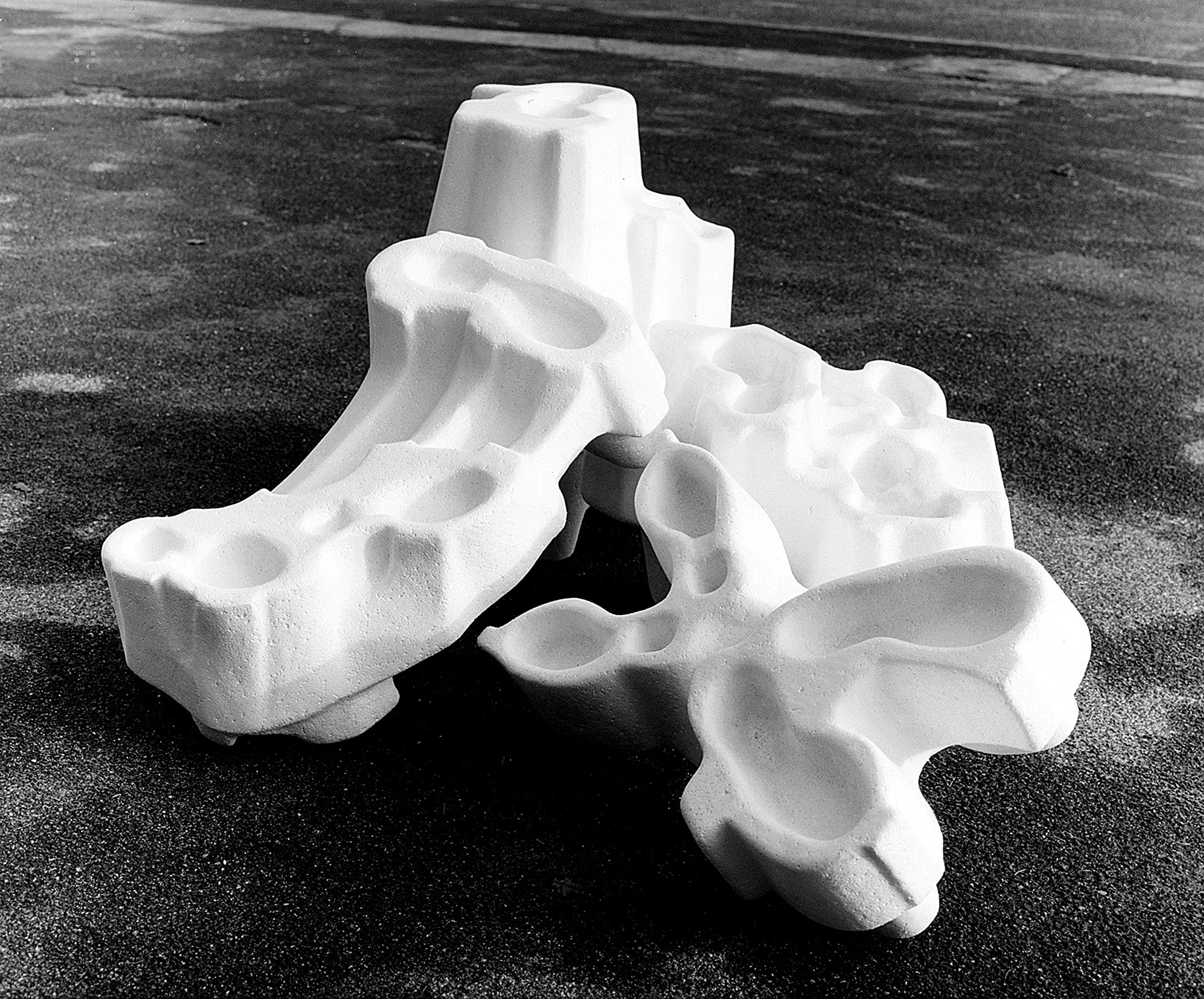
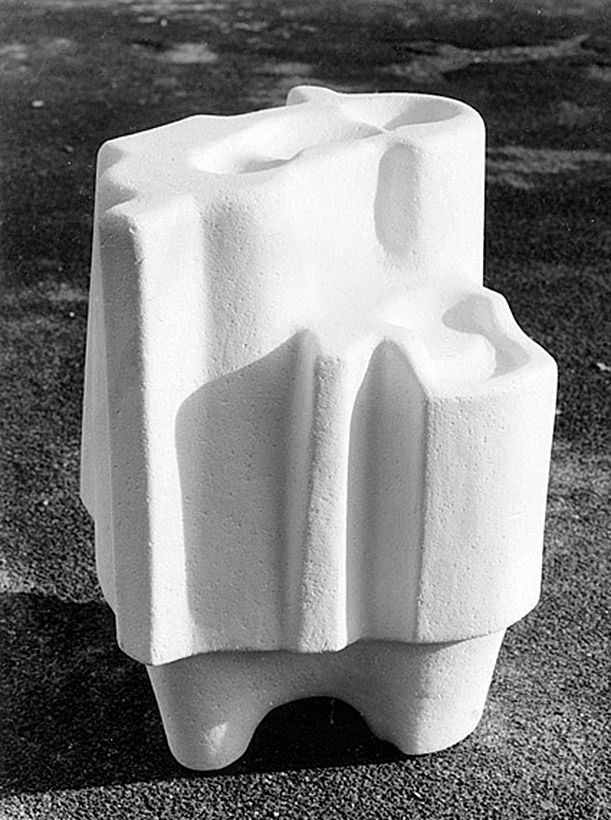
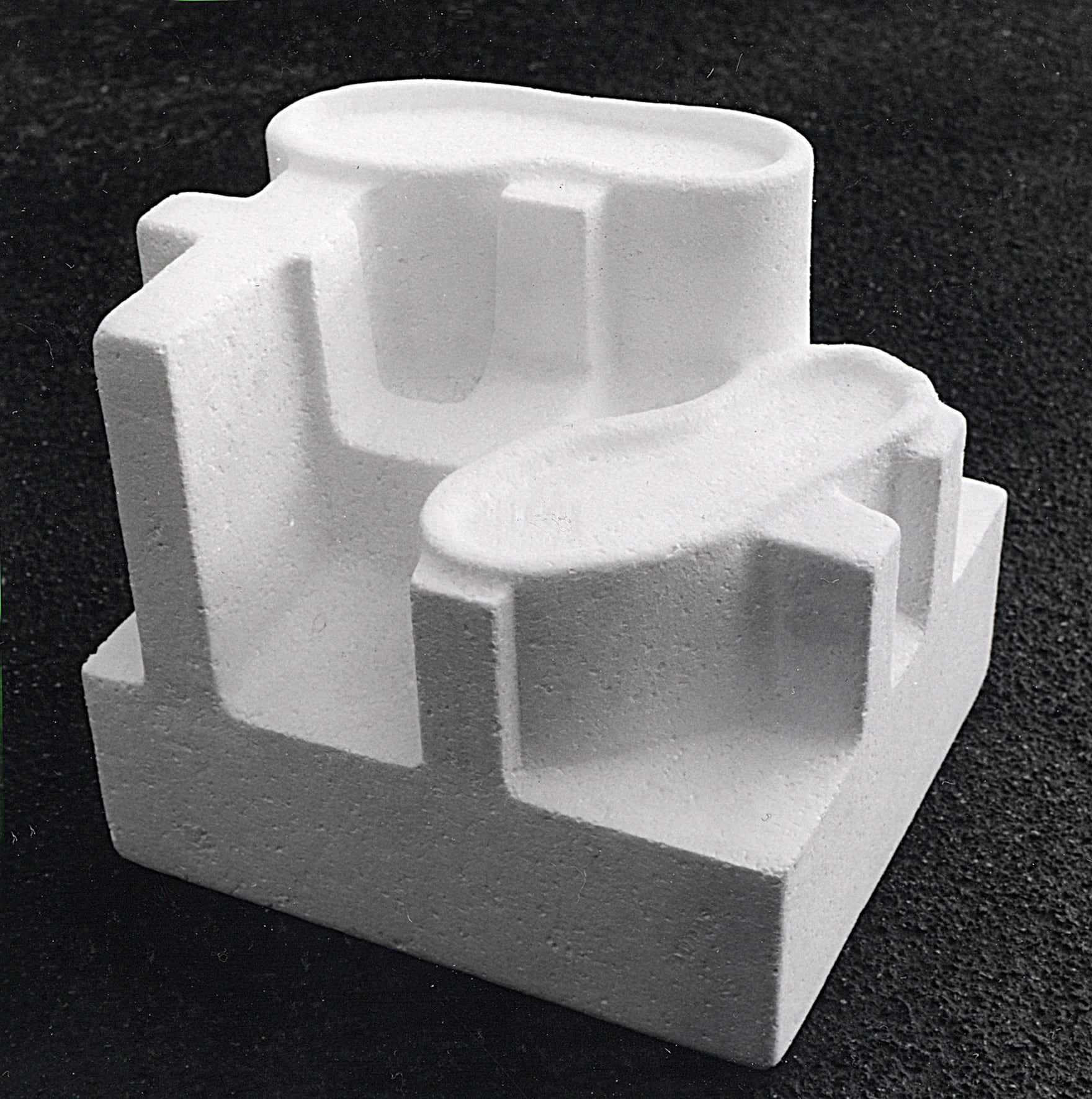
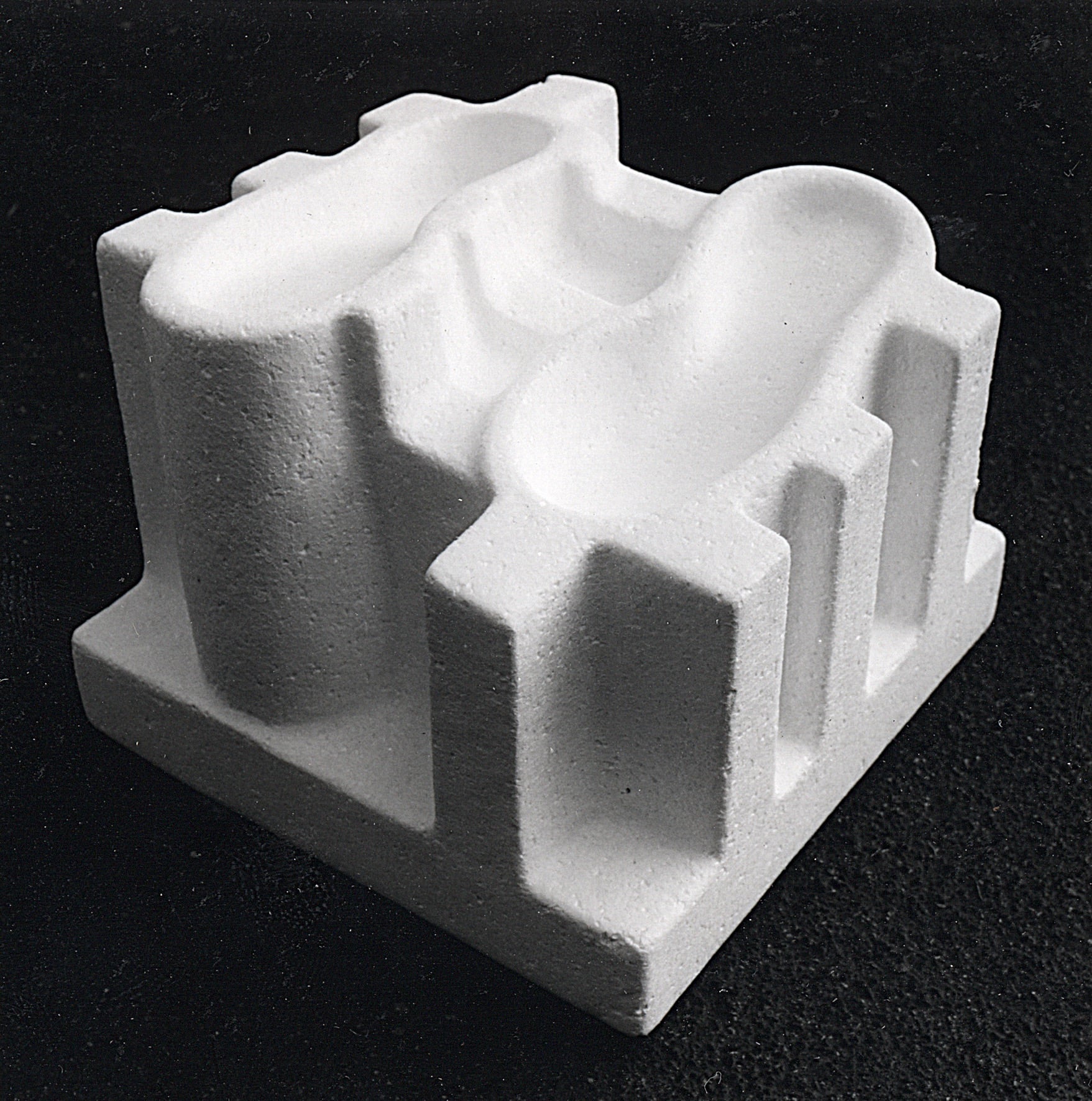
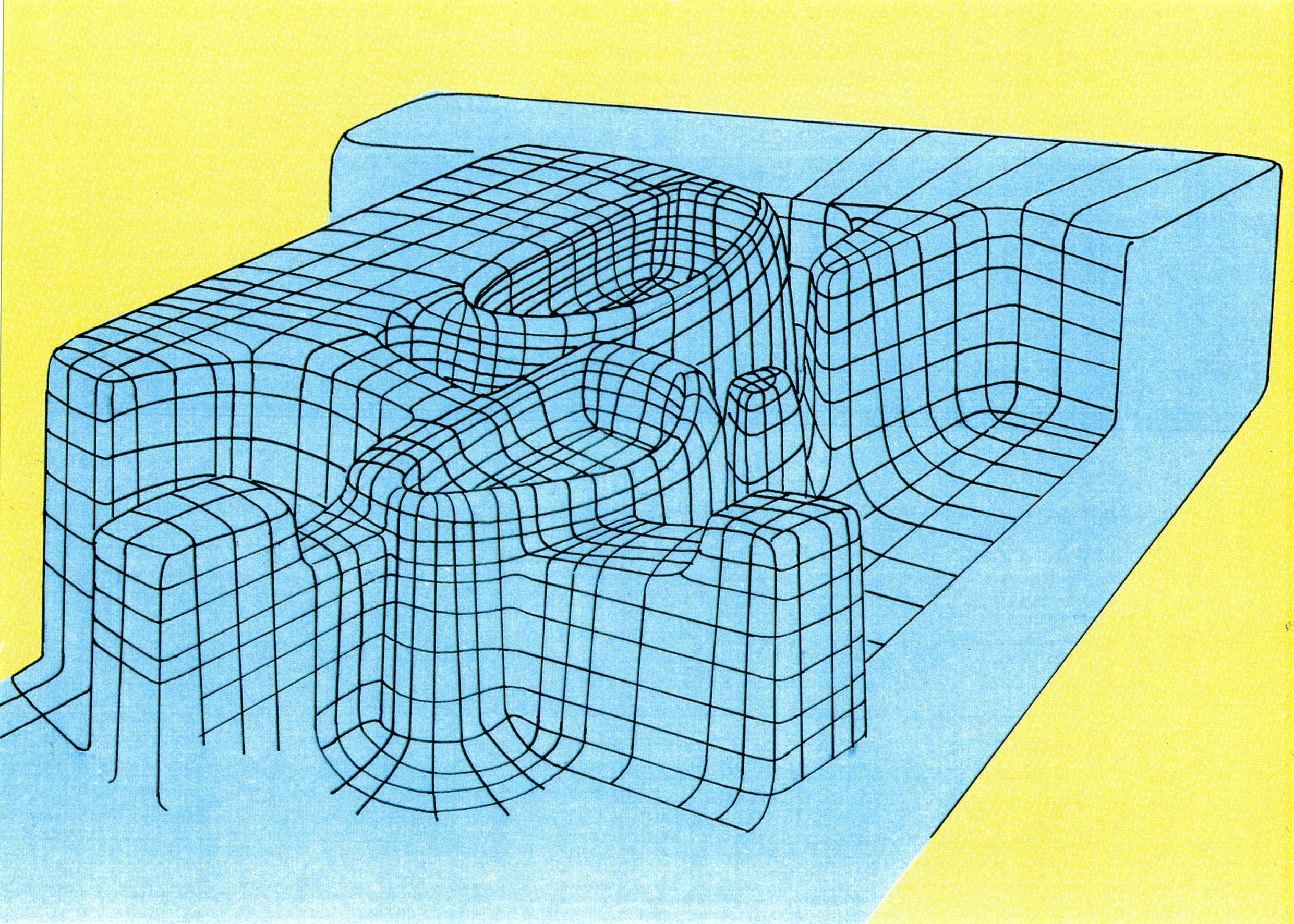
Styrofoam plinths
Material: polystyrene foam
Finding a new approach to a classical sculpture is not easy. The solid shape of the pedestals disturbsthe harmonious construct between engaged and free leg and rob the delicately balanced anatomy of its power. Figures that were meant to appear full of life seem frozen on their plinth of ever-cold marble. An oft-quoted utterance of Michelangelo’s is that the figures to be sculpted were already hidden in the mass of stones and just needed the sculptor to free them from the material. What might be hidden inside these pedestals: might it be something organic, biomorphic –which shapes could downwardly expand, enliven or yet again anchor the figures? What will become real and clear under these heroes’ feet as soon as somebody burrows towards the imaginary shape?
My aim was to examine the connection between the sculpture and its plinth. And to carve Styrofoam plinths in such a way as to invite a natural stance. However, they turned out to be traps. My plinth sculptures only ostentatiously appear to support the human position. The plinths actually put us into the position needy of support in the first place. This offers a sculptural metaphor of everyday experience with reciprocal dependencies.
And that’s when the trap springs: The person climbing onto the plinth believes they will find support but is led into a state of instability. Fortunately, it’s not a long way down to fall.